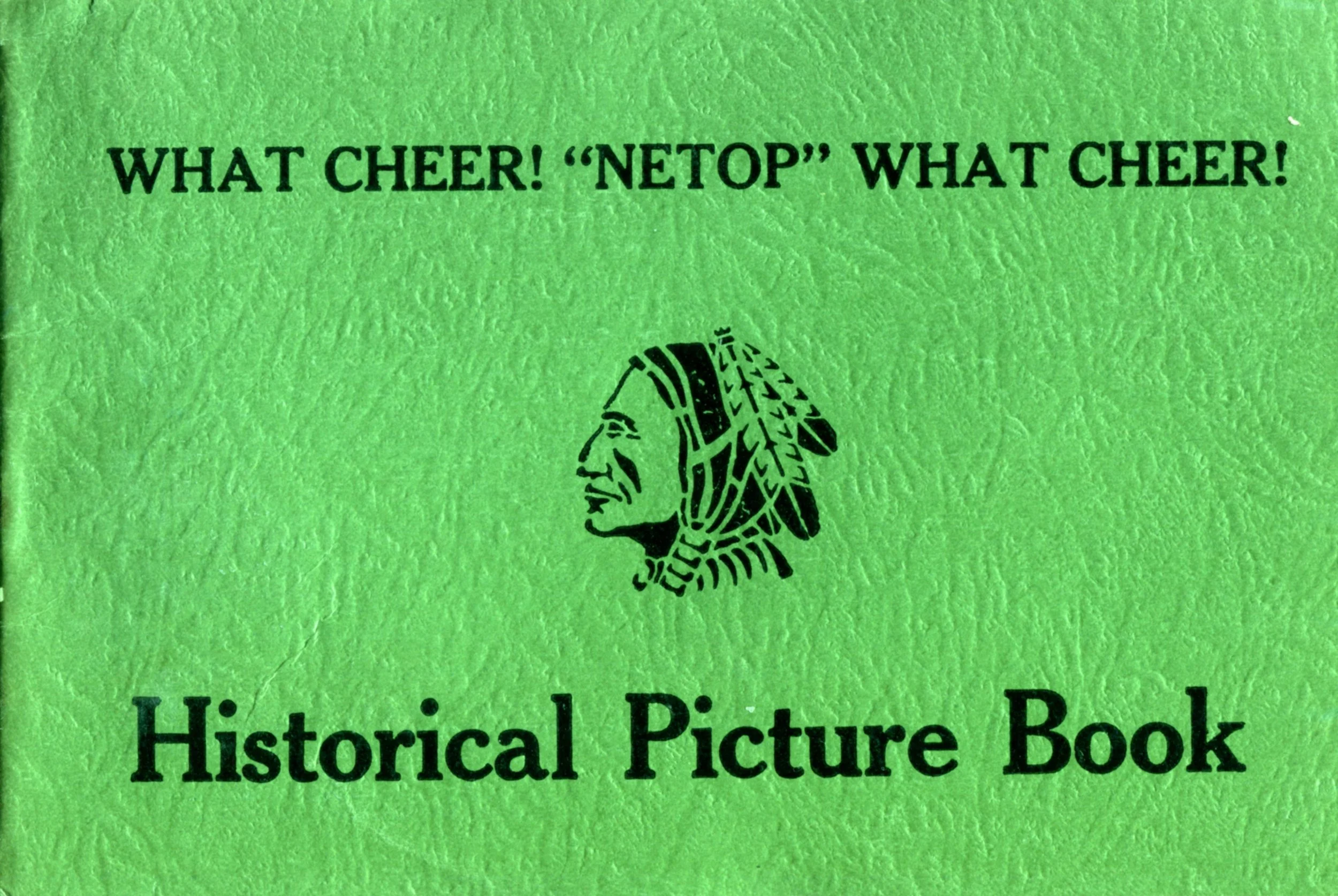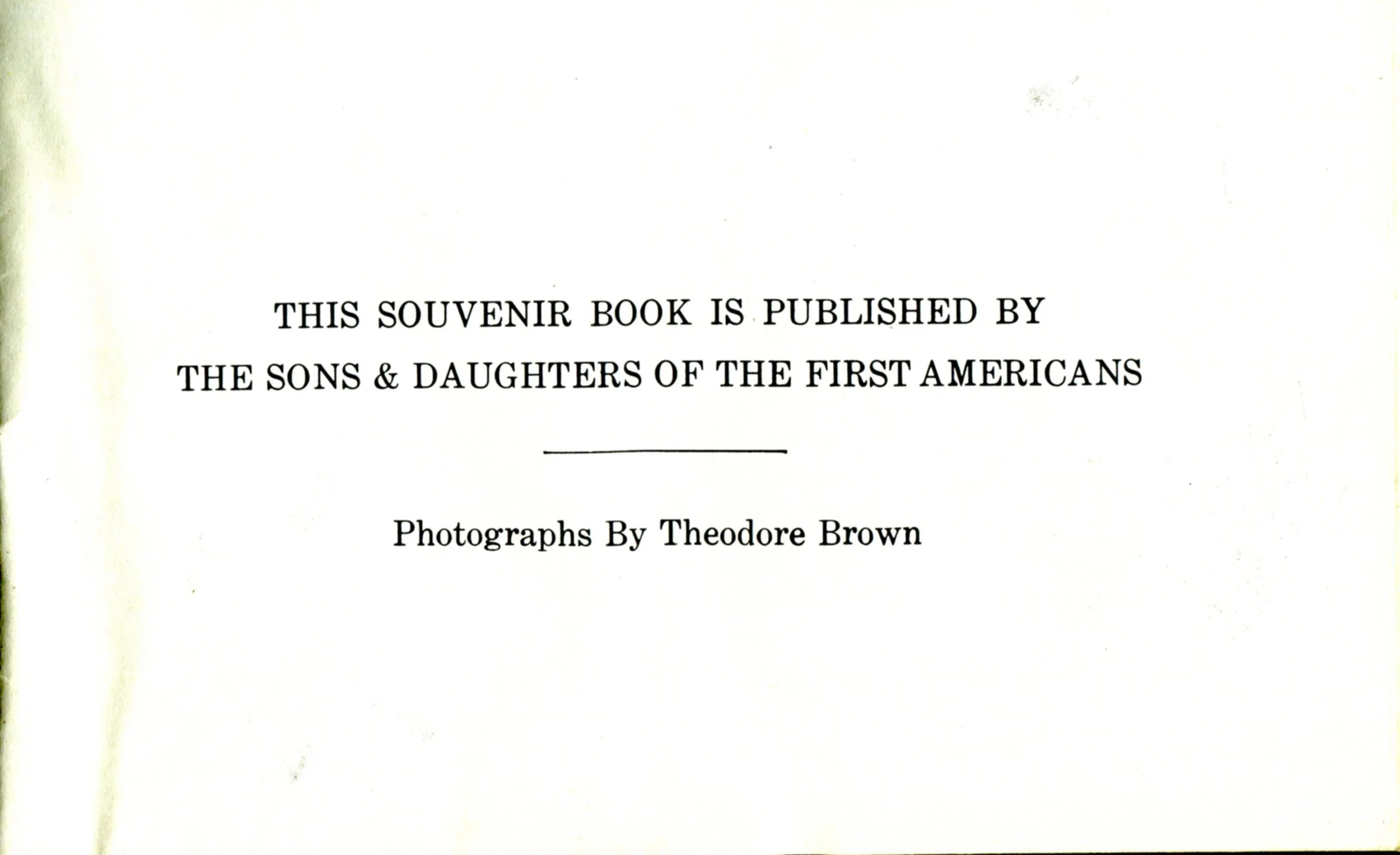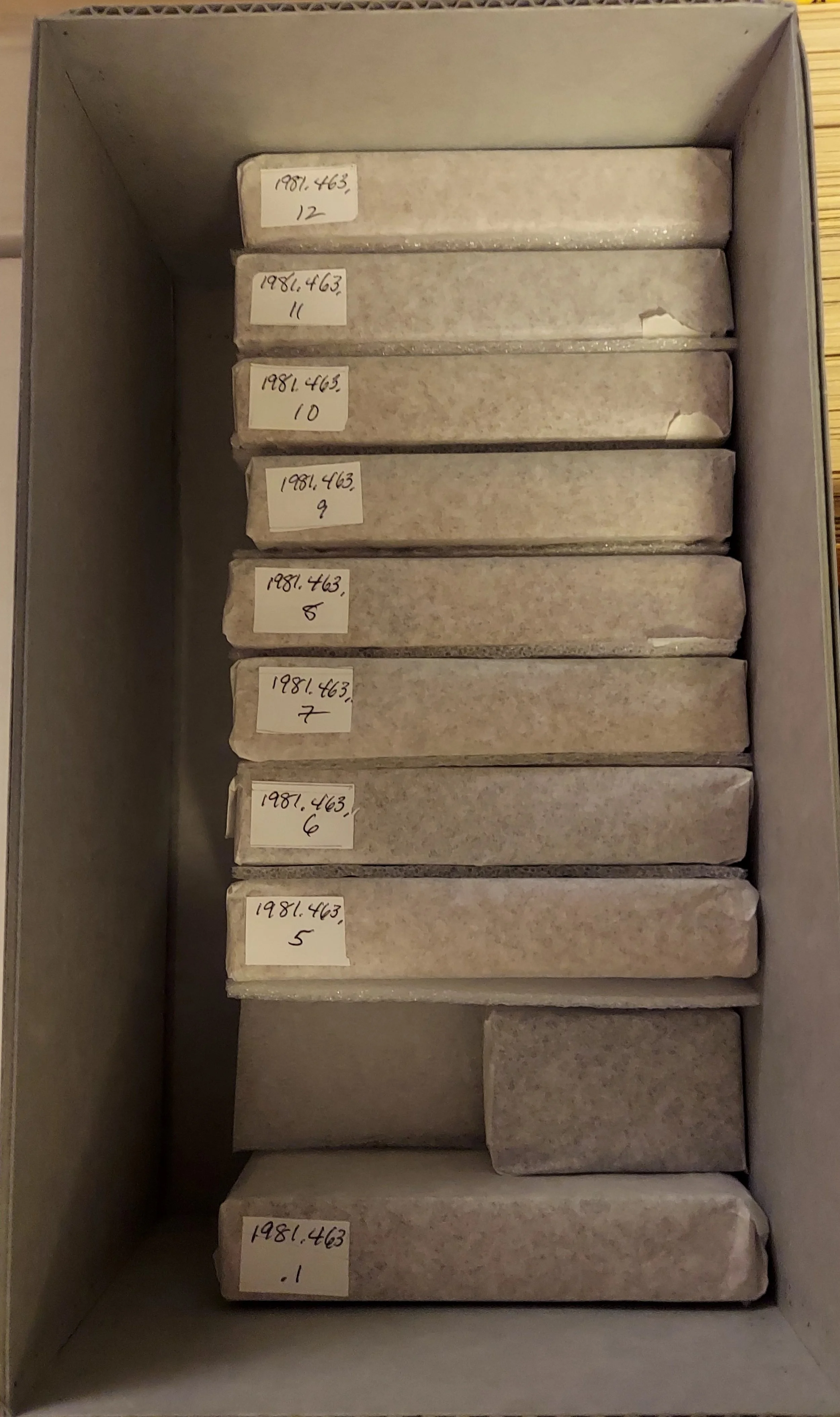From the Archives: What Cheer! "Netop" What Cheer! Historical Picture Book Plates
Belonging(s): “A close relationship among a group and personal or public effects”
“Asco wequassinummis, neetompooag” (Hello my friends)!
Hello! Welcome back to a long overdue installment of the From the Archives series where Collection Manager and Archivist Anthony Belz shares some of the more interesting material in the Tomaquag Museum archival collections.
Last summer the museum relocated the retail shop from two rooms to a singular adjacent room. This was done in order to make way for much needed office space as the museum staff has doubled since last year. This then allowed access to a storage closet that the shop had blocked off for display cases and a clothes rack, which basically made it inaccessible. In fact, it was so well hidden that for many years I did not even realize it was even there! Once the retail shop’s displays and inventory were moved, the closet became suddenly accessible for the first time since I had begun working here almost 6 years ago. The closet was a long-term storage location, (located in the space underneath the stairs leading to the second floor) and contained a seemingly random assortment of everything from taxidermy, to old art/educational supplies, old exhibit materials, magazines, newspapers and most oddly, (but not surprising) archival and collections materials. It became apparent while briefly poking around in the closet-and given quite the jump scare by a taxidermized sharped tooth weasel like creature hiding in the dark corner on a shelf -that I was going to be in for better, less blood pressure raising surprises..
That scare set the mood for the task of evaluating the contents of the closet of unknown horrors and determining if any collections or archives were in there. Now while it was apparent that some of the things had long outlived their usefulness and were remnants of the museum's past and no use to us now, there were a number of materials stored in there that did indeed belong to collections and archives.. While searching through the odd collection in this storage closet amongst the things designated for the landfill, I found a number of interesting and useful collections. The most interesting by far amongst these was found on a low shelf in a small wooden briefcase, (which upon visual inspection I thought might be a painters case as I imagined it was something a painter would use to carry their supplies out in nature to paint landscapes.) But upon opening the case, rather than art supplies, what I found had me stumped for a moment. In the dark closet with only a flashlight I couldn’t see much detail. I had to get to a place where there was more light and I could fully open the case and figure out exactly what I was inspecting. They are small blocks of wood, with grey and dark metal plates attached to them with small tack nails that had written descriptions on the back in pencil, and numbers written in white paint and in the corners as well as the holy grail for collections managers--accession numbers!!
Painters storage case with print blocks stored in pairs in plastic bags. The blocks date to ca. 1940.
They were accessioned in 1981 as group 1981.463.1-12. I have not yet located the original collection records, but I don't need them to know exactly what these wood and metal blocks are. As what often happens when you work in collections and archives, your familiarity is based upon the countless hours spent in the trenches pouring through archival material of all types is that you acquire an encyclopedic knowledge of all that you've encountered and identified as unique and one of a kind material-the literal definition of an item of archival significance. For the archival collections at the Tomaquag, this to me, is one of the best examples of what truly unique materials housed in the museum's archives.
With working in archives, especially those of a personal or internal organization, you often find yourself questioning what a document is, that is what is it's function, who created it and what purpose does it serve and how it fits in contextually with closely related archival materials created by a person to serve a purpose as a record of a place and time.
On June 4, 1937 the Sons and Daughters of the First Americans (SDFA) was founded by Elias Brown, Miss Ruth Brown, Ruth Brown, George Hazard, Ernest Hazard, Nettie Davis, George Davis, Theodore Brown (Photographer for the booklet), Christopher Noka, Theodore Glasko, Daniel Gongdon (Sagamore Chief White Oak That Bends-Mohegan) and Mary Ella Congdon (Redwing) who served as their Recording Secretary. The organization, which was an Indigenous only organization and according to the by-laws in the archive had very strict rules as to qualifications for membership. Land was also donated for a "longhouse" that would serve as the organizations headquarters. I don't know the entire story as of yet, but the museum’s Archival Fellow Kate Cullen-Fry in the past month has been organizing, transcribing and rehousing the collection containing two boxes of archival material from the Sons and Daughters of the First Americans. As part of the work in this collection she and I have been investigating what exactly what this material is and how it relates to the aims and goals of the organization. Since this research and organization of into the SDFA collection is still in the early stages, the information we will uncover will be revealed in a future blog post.
During her search as we begin to ask these questions, when a little thin, blue booklet entitled What Cheer! "Neetop" What Cheer! Historical Picture Book was located in one of the boxes. This booklet was entirely familiar to me as I had already discovered multiple copies with different colored covers peppered among the archives throughout the years I have been lucky enough to work as the Tomaquag’s Archivist. It made perfect sense that this booklet was among the materials of the SDFA collection as it was published directly by them through a defunct and I assume extremely brief (perhaps only for this booklet as I haven't seen it anywhere else in the archive) publisher, the Shannock Press, named for a small hamlet here in South County, Rhode Island.
In addition to the number of picture books in the archive, there are reproductions of the photographs that someone at the museum had made in the early 1980s, as these reprints were given individual and non related to this 1981.463 group of accession numbers. I believe these reprints were done with these original plates, rather than a photographic reproduction in an attempt to publish a new edition of the booklet. The picture book is a collection of 13 photographs taken by Theodore Brown of historically significant locations of the Narragansett-Niantic people including Narragansett Point (the Narragansett are the “people of the small point”) Cocumcussic (aka Smith’s Castle), Drum Rock, Talking Rock, King Philip's Seat (Apponaug, not Mount Hope, Rhode Island) and Great Swamp (King Philip’s Memorial in book) Memorial.
Chief Night Hawk (Philip K. Peckham) Print from What Cheer! “Neetop” What Cheer! Historic Picture Book. Print from book (Left) and Plate (Right) Tomaquag Museum Archives.
There is no way of knowing how many of these picture books were published and exactly what year (because no copyright date is included) but by the quality of the reproduced images, paper texture, style and font, that it was most likely produced around 1940. The booklet does mention the year 1939 in the Indians of Today page, so it could have been published anywhere from 1939 until 1941, so 1940 is a reasonable guess. When I was able to open the box and get a better look in natural light, I knew immediately what I had discovered, the original etched photographic plates that were used to print this booklet! These individual blocks which number 12 in total (1 missing), were retained by Redwing as part of her personal collection and remained at the museum after her passing in December 1987 and have remained at the museum ever since. In the process of writing this blog post, I rehoused the plates by wrapping them individually in acid free tissue paper and then buffering them in archival foam to prevent unnecessary friction between them in their new home. (See image below)
They were stored away in this closet as a unique relic of a printing process and serve as documentation of these important places to the Narragansett-Niantic people at a time when they were attempting to be seen and recognized in the wake of a post European Colonized world, where they were the victims of genocide, disease and slavery. Unfairly detribalizated and their traditional tribal lands sold off to the highest bidder in 1881, it wasn't until just over a century later in 1983, were the Narragansett-Niantic people finally achieved Federal Recognition as a tribe. The Sons and Daughters of the First Americans as an Indigenous organization and Redwing in particular, were instrumental at remedying this injustice by being not only seen, but heard and acknowledged as part of land you stand upon.
The photographic plates have been now rehoused from the painters case into an acid free box and buffered with acid free tissue and foam.
Archival Program funded in part by the USDA Rural Development.







